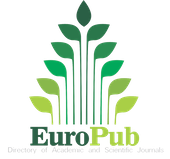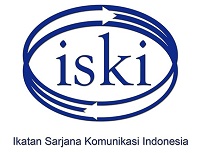Management Of Alternative Media Kawalcovid19 As A Source Of Information During The Covid-19 Pandemic
Abstract
Keywords
Full Text:
PDFReferences
Anggraini, L. (2014). Desain Komunikasi Visual. Nuansa Cendekia.
Atton, C. (2001). Approaching Alternative Media : Theory and Methodology Chris Atton. Europe, Atton, C.
Bailey, O. G., Cammaerts, B., & Carpentier, N. (2007). Understanding Alternative Media. McGraw-Hill. https://doi.org/10.1093/labmed/29.3.134
Djalante, R., Lassa, J., Setiamarga, D., Sudjatma, A., Indrawan, M., Haryanto, B., Mahfud, C., Sabaruddin, M., Djalante, S., Ra, I., Adi, L., Ayu, G., Surtiari, K., & Warsilah, H. (2020). Progress in Disaster Science Review and analysis of current responses to COVID-19 in Indonesia : Period of January to March 2020. Progress in Disaster Science 6, 6, 1–9. https://doi.org/10.1016/j.pdisas.2020.100091
Fardiah, D., Rinawati, R., Darmawan, F., Abdul, R., & Lucky, K. (2020). Media Literacy for Dissemination Anticipated Fake News on Social Media. Mediator: Jurnal Komunikasi, 13(2), 278–289. https://doi.org/10.29313/mediator.v13i2.6624
Farizi, S., & Harmawan, B. N. (2020). Data Transparency and Information Sharing: Coronavirus Prevention Problems in Indonesia. JAKI, 8(1), 35–50.
Fuchs, C. (2010). Alternative media as critical media. European Journal of Social Theory, 13(2), 173–192. https://doi.org/10.1177/1368431010362294
Irwanto, & Hariatiningsih, L. R. (2019). Aktivitas Santap dan Minum Generasi Z pada Media Sosial Instagram. Mediator: Jurnal Komunikasi, 12(2), 141–154. https://doi.org/https://doi.org/10.29313/mediator.v12i2.5048
Kountur, R. (2007). Metode Penelitian untuk penulisan Skripsi dan Tesis, Edisi Revisi. PPM.
Najih, A. (2020). Komunikasi Selama Pandemi Covid-19: Belajar dari kegagalan Komunikasi Risiko Kesehatan yang Efektif. JISIP, 9(2), 111–122.
O’Sullivan, T. (1994). Key concepts in communication and cultural studies (Second Edi). Routledge.
Oktariani, R., & Wuryanta, E. W. (2020). Komunikasi Pemerintah Melalui Media Center Gugus Tugas Percepatan Penanganan Covid-19 Kepada Publik. Expose, 3(2), 113–123.
Porta, M. (2008). Dictionary of Epidemiology. Oxford University Press.
Pratiwi, R. H., & Darmawan, F. (2019). Infografis sebagai Pendukung Berita In-depth dalam Situs Tirto.id. Mediator: Jurnal Komunikasi, 12(1), 35–45.
Sokowati, M. E., & Junaedi, F. (2018). Media Alternatif Kaum Muda: Produksi Konten, Kebijakan Redaksi, Identitas dan Politik di Era Siber.
Sugiyono. (2014). Memahami Penelitian Kualitatif. Alfabeta.
Sumadiria, H. (2006). Bahasa Jurnalistik Panduan Praktis Penulis dan Jurnalis. Simbiosa Rekatama Media.
Taylor, S. (1984). Introduction to Qualitative Research Methods: The Search for Meaning (second edition). John Wiley.
Tebba, S. (2005). Jurnalistik Baru. Kalam Indonesia.
Vatikiotis, P. (2005). Communication Theory and Alternative Media. Westminster Papers in Communication and Culture, 2(1), 4–29.
DOI: https://doi.org/10.29313/mediator.v14i2.8415
Refbacks
- There are currently no refbacks.

This work is licensed under a Creative Commons Attribution 4.0 International License























